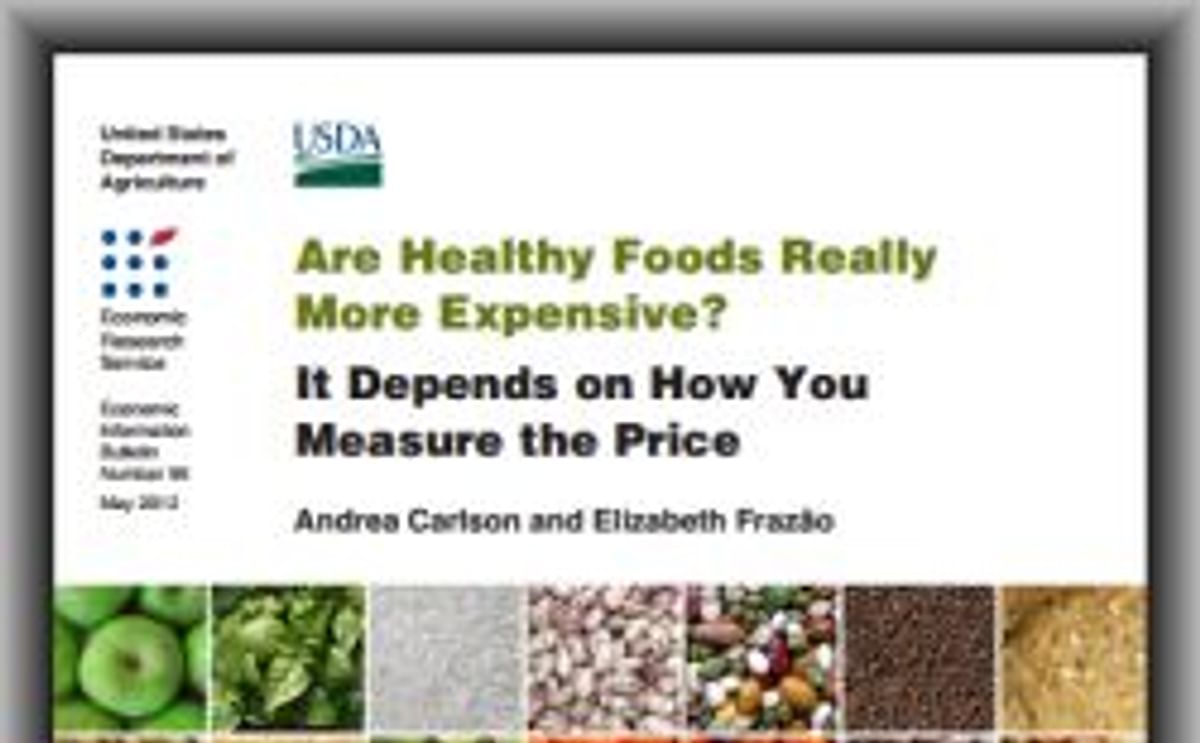For a balanced assessment, this study compares the prices of healthy and less healthy foods using three price metrics: the price per calorie, per edible gram, and per average portion. The authors also calculate the daily cost of meeting the food group recommendations on the ChooseMyPlate.gov website.
Previous studies also sometimes lack a clear definition of healthy foods, which are defined in this report as food items that:
- Contain an amount of a food in at least one of the major food groups (vegetables, fruits, grains, dairy, and protein foods) equal to at least half the portion size that the Dietary Guidelines for Americans 2010 uses for measuring the nutrients in that food.
- Contain only moderate amounts of saturated fats, added sugars, and sodium.
- Foods low in calories for a given weight appear to have a higher price when the price is measured per calorie. For example, vegetables and fruits, which are low in calories, tend to be a relatively expensive way to purchase food energy.
- Conversely, less healthy foods (called “moderation foods” in this report)—especially those high in saturated fat and added sugar—tend to be high in calories and to have a low price per calorie.
- When measured on the basis of edible weight or average portion size, grains, vegetables, fruit, and dairy foods are less expensive than most protein foods and foods high in saturated fat, added sugars, and/or sodium.
- In following the food group recommendations at ChooseMyPlate.gov, it is less costly to meet the grains, dairy, and fruit recommendations than those for vegetables or protein foods.
How Was the Study Conducted?
The authors estimated the cost for 4,439 food items by the price per calorie, per edible gram, and per average portion consumed. The study drew on three data sets: the National Health and Nutrition Examination Survey (NHANES) to estimate the types and quantities of foods consumed, the USDA’s Center for Nutrition Policy and Promotion (CNPP) food prices database for food prices, and the USDA Food Pattern Equivalent Database (formerly known as the MyPyramid Equivalent Database) for information on food group classification, saturated fat, added sugars, and sodium content.
Read full ERS report: "Are Healthy Foods Really More Expensive? It Depends on How You Measure the Price", by Andrea Carlson and Elizabeth Frazão










